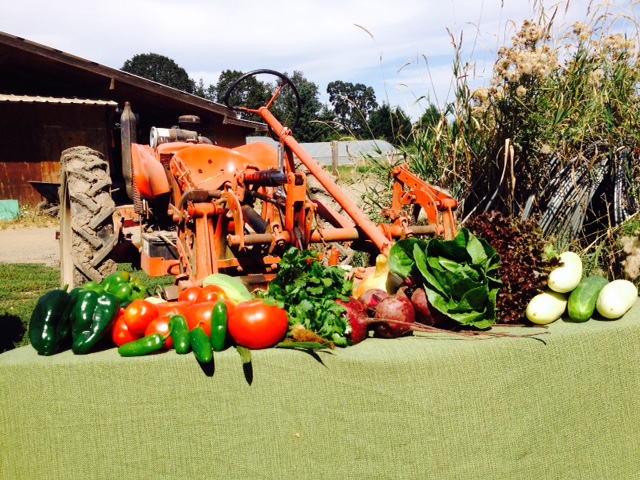Hello everyone! Welcome to the 2017 season. We are so happy to have all of you enjoying our vegetables on your table with your friends and family…we appreciate your support of our beautiful farm and look forward to working with you for the next 24 weeks.
My name is Jane and I’m the CSA coordinator for the 2017 season. On behalf of the entire SIO crew, I will be writing the blog this season (in addition to Katherine’s wonderful recipes) where each week we will try and highlight the vegetables you are receiving as well as other goings-on at the farm. Starting next week, I will also be introducing you to one of your farmers each week or two; we have a wonderful, solid crew of folks who have been working together now for many seasons.
We will be providing information about the share that could include storage tips, varietal information, or special notes about unusual crops or conditions as they arise. You can expect us to feature at least two crops a week throughout the season.
Due to the wettest winter ever in Portland (wow!) we had a bit of a slow start this spring, but the past month has been go, go, go! Our crew has been hard at work seeding, transplanting, and weeding, and we have been excitedly anticipating the coming of this week.
The early weeks of the share provide an opportunity to showcase all of the wonderful greens that thrive in our bioregion. The beginning of the season will be ripe with vibrant spring greens of all shapes, colors, textures, and flavors. These greens like very high humidity in order to stay happy. Refrigerators dry out the greens, and overnight a juicy, lush head of bok choi will become weepy and sad. We recommend storing all of your greens in plastic bags in order to keep them perky and fresh.
In Your Share This Week:
- Bok Choi
- Fennel
- Green Garlic
- Kale
- Kohlrabi
- Lettuce
- Spinach
Crop Highlights
Bok Choi: The crisp, meaty ribs of bok choi are one of my favorites in the spring. We keep our choi covered underneath ‘floating row cover’ (more about that later) which keeps the greens protected from weather and pests. It also results in more delicate leaves- so in the interest of not bruising, cracking, or crushing, we opted not to wash your choi. Just give it a quick rinse under cool water before you want to use it in case it has any soil stuck to the stems or bottom.
Fennel: This is one of the crops that grows really well for us at SIO. We love growing and harvesting fennel, and it is our field manager/tractor operator Brian’s favorite item to snack on raw. For all of you ice cream fans out there, Salt & Straw has been purchasing our fennel in August for 2-3 years now to make their fennel-maple seasonal flavor. The bulbs you are receiving are small, but tender and perfect now, with plenty of stem and frond to enjoy cooking with as well.
Fresh Garlic: You’ll find young garlic in your share- essentially immature garlic that has not reached full size or maturity. When you prepare it you will notice small bulbs forming as well as all the layers of wrapping that would later on dry, cure, and tighten to form the papery skins that enable mature garlic to store for so long.
Kohlrabi: The skin on this Azur-Star kohlrabi has the most eye-catching hue of purple! Kohlrabi is related to cabbage, broccoli, kale, radishes, and turnips- and has a flavor that resembles broccoli stem, which is essentially what a kohlrabi is. Over time, the plant has been selected to feature a swollen stem, which is the round bulb that we eat. We left the leaves attached since they taste pretty good too!
Lettuce, Mini Heads: This is our second year growing mini head lettuces, and they are wonderful! The varieties we are introducing you to are Breen (bronze romaine) and Rhazes (dark red bibb). They are proving to be a nice component to our lettuce and salad mix, so those of you who also have a salad share may find them mixed amongst the other items. The dark red bibb lettuces have a smooth buttery texture, while the bronze minis, like full heads of green romaine, maintain a nice crispness. Because they do not grow very big, we can plant them very close together, which allows for a fast and light harvest and results in beautiful strips of color from the beginning to end of each bed.
We hope you enjoy your first share of the season! Please remember to visit Katherine’s blog for delicious recipes!
http://www.
(The first time you click this link you will need to use the username and passcode we emailed you).
SIO at 5:45pm Monday, June 5th 2017:

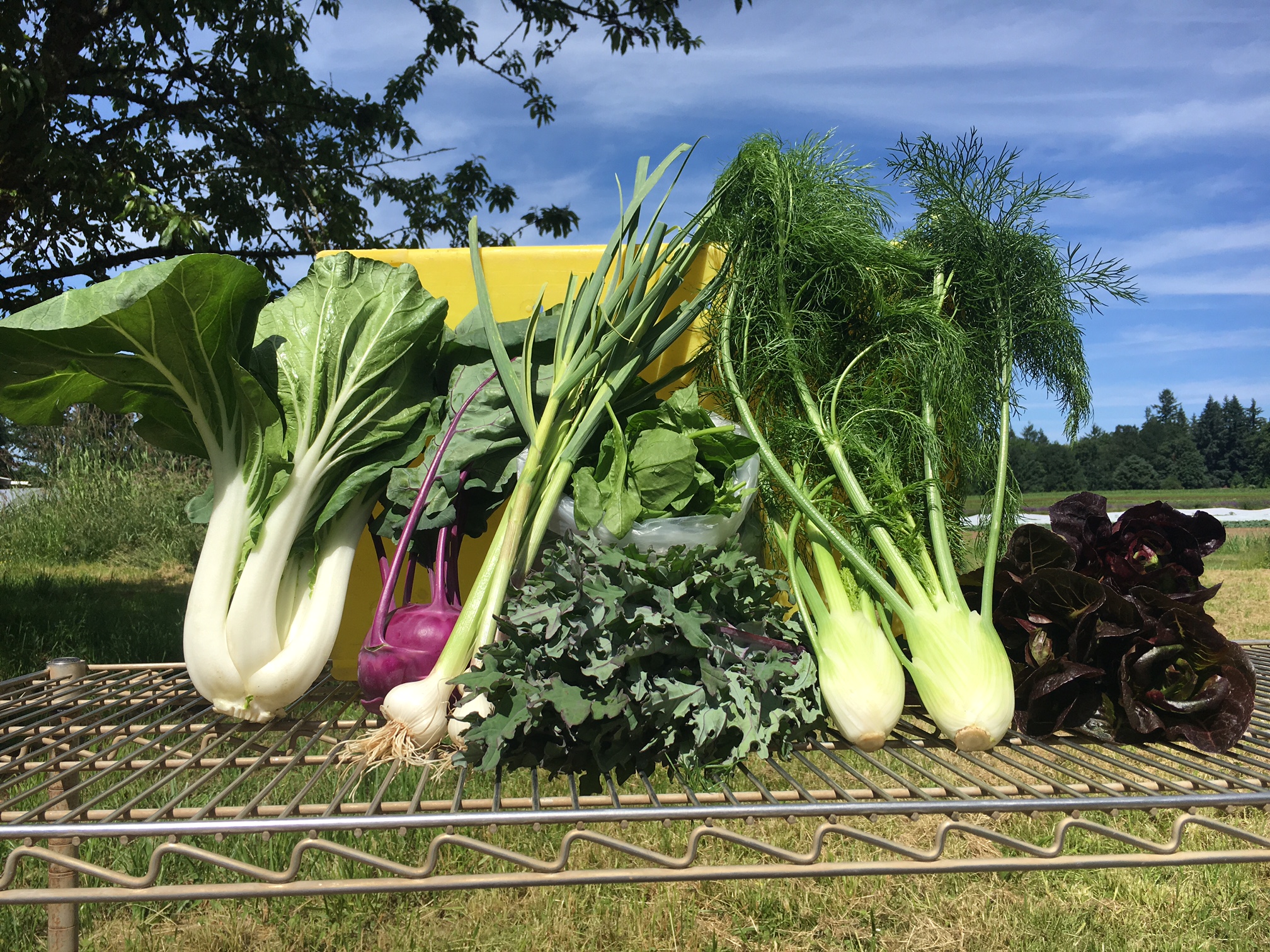


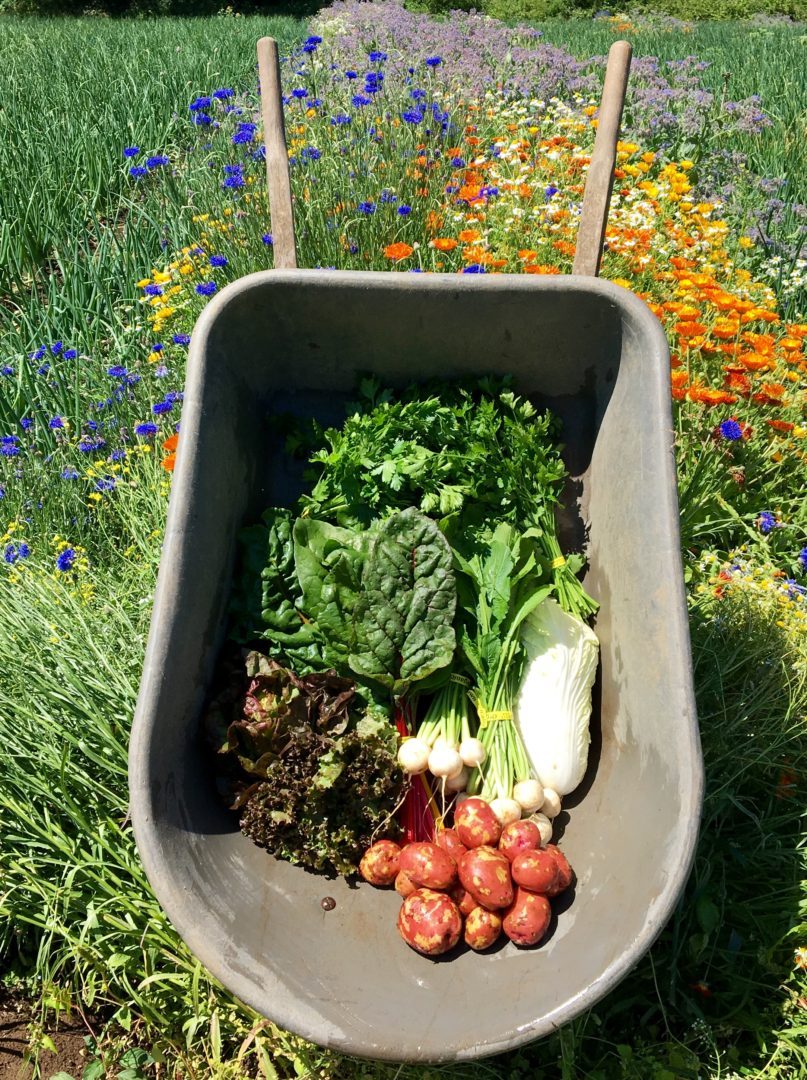







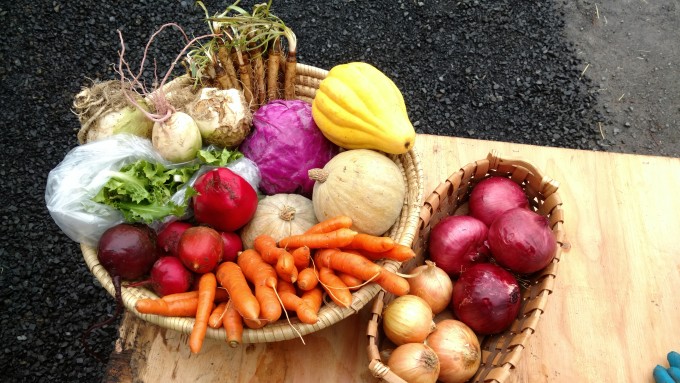


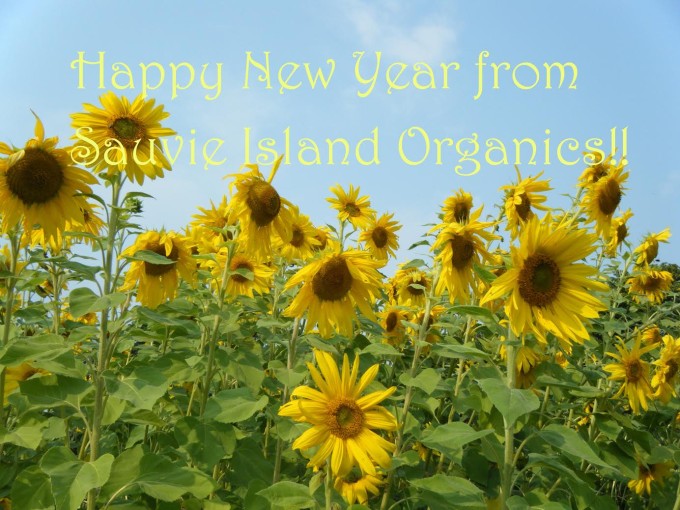
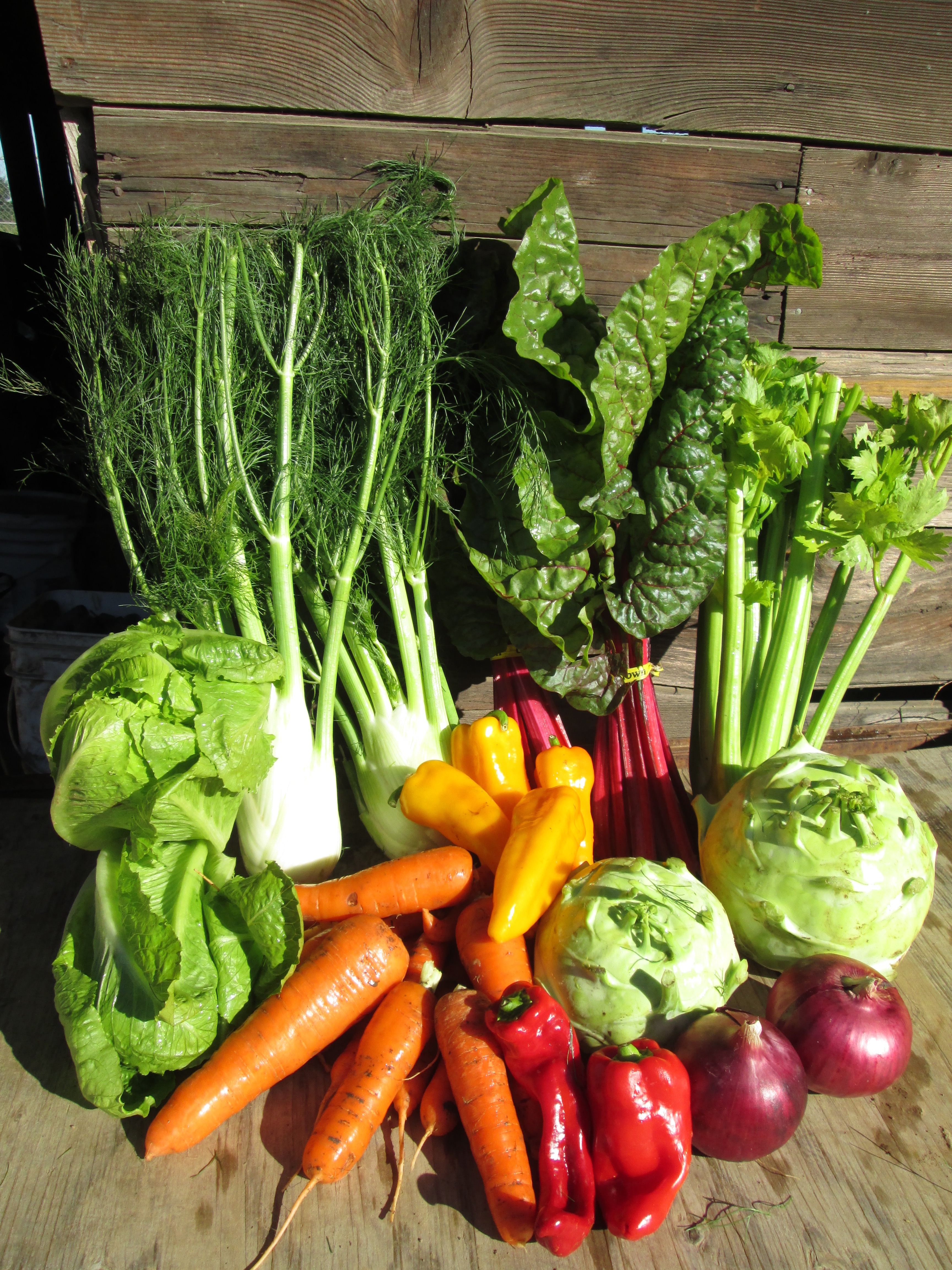

 . An ideal seeding sequence step by step is usually as follows. Mow the leftover vegetable plant debris, apply irrigation water, wait a few days and then till the soil, wait a week or more until there is a thick cover of newly germinated weed seeds (like an huge Chia-Pet carpet), at that point broadcast the oats, then lightly disk to kill that first flush of weeds and simultaneously bury the desired oat seeds, finally to provide the best seed to soil contact, we pull a heavy set of ring rollers across the field. Ideally within a week or so we get a rainfall, if not we irrigate to get a well established thick green stand of oats.
. An ideal seeding sequence step by step is usually as follows. Mow the leftover vegetable plant debris, apply irrigation water, wait a few days and then till the soil, wait a week or more until there is a thick cover of newly germinated weed seeds (like an huge Chia-Pet carpet), at that point broadcast the oats, then lightly disk to kill that first flush of weeds and simultaneously bury the desired oat seeds, finally to provide the best seed to soil contact, we pull a heavy set of ring rollers across the field. Ideally within a week or so we get a rainfall, if not we irrigate to get a well established thick green stand of oats.